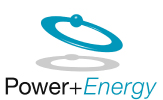A Conversation With Power & Energy Inc.
Kicking off our segment on hydrogen fuel cells is Noel Leeson of Power & Energy, Inc., a technology company from Ivyland, Pennsylvania.
Power & Energy, Inc. evolved from hydrogen purification into the manufacturing of hydrogen analyzers, separators and generators to provide ultra pure H2 fuel for fuel cells. Most notably, they developed micro-channel palladium membrane technology to improve the quality of the hydrogen fuel that in turn improves the performance and longevity of Proton Exchange Membrane (PEM) fuel cells. Leeson is the company’s president.

As a preamble, in very simple terms, the PEM fuel cell process has three components: a fuel reformer, a membrane separator to provide the pure H2 fuel and the fuel cell. The reformer breaks down fuel (such as Methanol) into into hydrogen and carbon monoxide and carbon dioxide. The membrane separator separates H2 from these materials (called the “reformate”), leaving behind CO, CO2 and water as well as trace amounts of unreformed fuel. Finally the fuel cell splits the H2 atom into an electron used to power a device while passing the proton through a membrane, leaving behind nothing but water as residue.

Thankfully, each step along the way utilizes precious metals and precious metal alloys of the platinum group, as catalysts and membrane materials. How much of it? Alas, a trade secret.
The three process steps may be run in sequence but they don’t have to be. That is why in vehicle applications you will only find the actual fuel cell and a tank of pure hydrogen as the fuel. H2 is delivered and stored in a vehicle as a highly compressed gas making delivery more complicated. On the upside, this is the only difference to conventional gasoline storage and the two products are sold side by side at a number of gas stations in Europe already. Fueling is easy to do and a pressure valve prevents hazards. …
Read the full article


